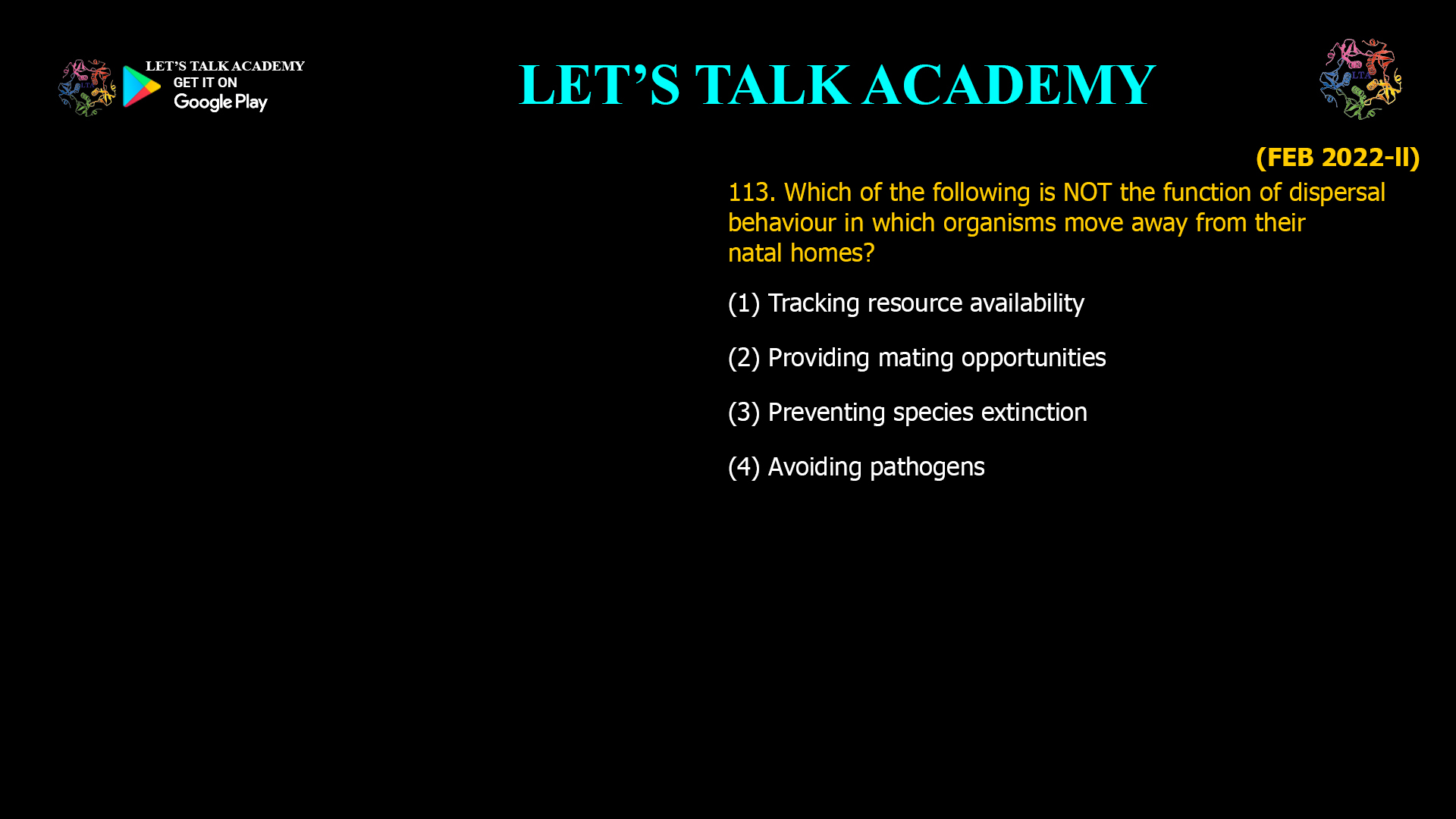- Which of the following is NOT the function of dispersal behaviour in which organisms move away from their natal homes?
(1) Tracking resource availability
(2) Providing mating opportunities
(3) Preventing species extinction
(4) Avoiding pathogensCore Functions of Dispersal Behavior
Dispersal serves several important roles in the lives of plants, animals, fungi, and even microbes:
-
Tracking Resource Availability: By moving away from crowded or depleted natal areas, individuals can find new habitats with more abundant resources, reducing competition and increasing their chances of survival.
-
Providing Mating Opportunities: Dispersal increases the likelihood of encountering unrelated individuals, which helps avoid inbreeding and often provides access to a wider pool of potential mates.
-
Avoiding Pathogens and Parasites: Moving to new areas can help organisms escape high concentrations of pathogens or parasites that may accumulate in natal sites, thus enhancing individual health and survival.
What Dispersal Does NOT Do Directly
While dispersal has many benefits, preventing species extinction is NOT a direct function of dispersal behavior. Extinction is a complex process influenced by numerous factors, including habitat loss, climate change, overexploitation, and catastrophic events. Although dispersal can contribute to species persistence by spreading risk and enabling recolonization of empty habitats, it does not directly prevent extinction. Instead, it is a consequence of dispersal’s effects on population connectivity, genetic diversity, and adaptability.
Why This Distinction Matters
Understanding the distinction between direct functions and broader consequences is important in ecology and conservation. Dispersal is an adaptive trait that primarily benefits individuals and populations by enhancing resource access, mating, and pathogen avoidance—not by directly safeguarding a species from extinction.
Conclusion
The function that is NOT directly served by dispersal behavior in which organisms move away from their natal homes is:
Preventing species extinction
-




2 Comments
Kajal
October 12, 2025Preventing species extinction
Santosh Saini
November 26, 2025Preventing species extinction